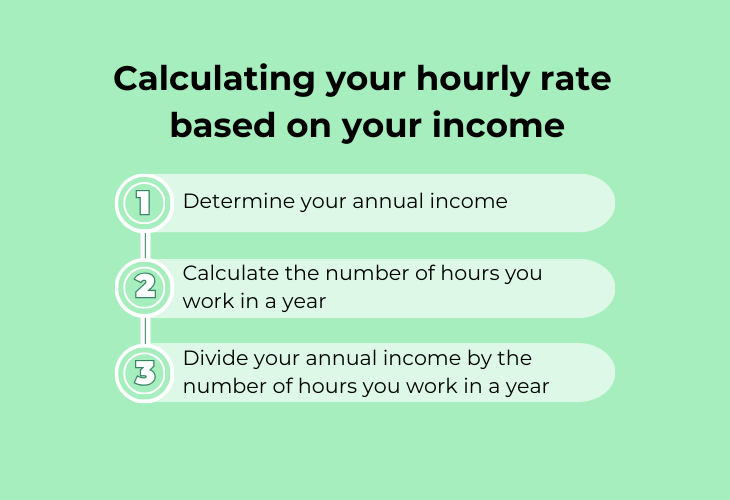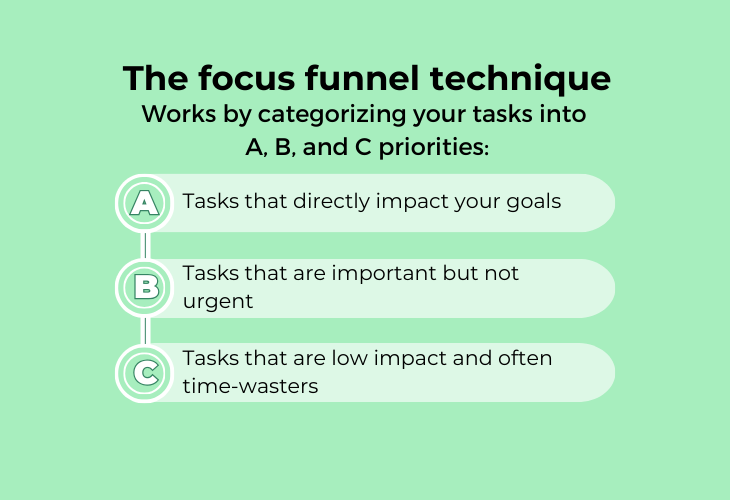Do you ever wonder if your time’s being well spent? How much money do you lose by binge watching instead of growing your side hustle, and is it worth the time you spend? To truly know the value of your time, you need to understand how to calculate your hourly worth, explore what you spend your time on, and investigate the opportunity costs of every activity.
Once you know the true value of your time, you can better optimize the hours you spend, to maximize both the quality of your life, and the amount of money in your pocket. Read on, because we explain it all.
Understanding the true value of your time as a small business owner
As a small business owner, your time is your most valuable asset. But many entrepreneurs and business owners repeatedly undervalue their time, usually because they never calculated their hourly worth.
Knowing how much your time is worth can help you make better decisions about how you spend your hours each day. The first step is to calculate your hourly worth based on your annual income and work hours. Then you need to evaluate what you do with your time every day.
Once you have these two pieces of information, you can work out the opportunity cost of every activity and start to optimize your time.
How to calculate your hourly rate based on your income

The true value of time is hard to quantify, but as a small business owner, it’s important to do your best to know how much your time is worth, so you can spend it wisely. Here’s a step by step guide to calculating your hourly rate.
- Determine your annual income. This includes the amount of money you earn from your business, any side hustles, and your day job if you have one.
- Calculate the number of hours you work in a year. Estimate the number of hours per week that you spend earning money at your business, day job, and side hustle, then multiply that by 52 weeks to get the total number of hours you work annually.
- Divide your annual income by the number of hours you work in a year to reach your hourly rate. For example, you work 40 hours a week, which is 2,080 hours a year, and you earn $60,000 a year. $60,000 divided by 2,080 = $28.85 per hour.
Now you’ve worked out your hourly rate, you can use it to determine how much you could earn per hour if you spent your leisure hours working instead. Optimize your time and make the most of every hour. Cut out time-wasters like binge-watching TV and be strategic about taking on additional work.
Assess how you currently spend your time
Things like watching TV, excessive social media use, and inefficient chores around the house are essentially costing you money. If you spend 10 hours a week on leisure activities, that’s close to $300 of opportunity cost per week, or $15,600 per year!
But do you know how much time you’re losing on mindless activities? Most of us don’t even realize where our time disappears to. That’s why your next step is to take a long, honest look at how you spend your time.
Track your time
One effective strategy is to track how you currently spend your hours. Using time tracking software like ATracker or Clockify can make identifying time wasters easier. Take a week or two to log your daily activities. Be honest—note the time you spend earning money, doing chores, exercising, binge-watching TV, and even sleeping.
At the end of the tracking period, review your logs to see where your time really goes. You may be surprised at the number of hours per year spent on things that don’t really matter to you.
Identify time wasters like binge watching
The small moments and hours you spend each day on mindless activities add up quickly over time. Something as simple as watching your favorite TV show could significantly impact the true value of time for your business.
Look at your tracked time for patterns in your behavior and activities to pinpoint your biggest time wasters, like scrolling on social media, or inefficient work habits. Once you know how much time you’re wasting, calculate how much money that time costs you. The results may shock you into making a change.
Maximizing your working hours for peak productivity
Now you know your hourly worth and where your time is going, you can reevaluate how you’re spending your time each week and make adjustments as needed to ensure your time is being well spent. When you understand the true cost of your time, you gain the power to make more of it.
Reclaim your time for more valuable activities
Once you know the number of hours you spend each week watching TV or browsing social media, you may realize you have more free time than you thought. The time you waste could be spent growing your business, spending time with loved ones, or enjoying hobbies. Reclaim your time to generate more value in your life and business by making a plan to limit or eliminate your time wasters.
Replace TV watching with reading or light exercise and set limits on social media and email use. Regaining just 5 to 10 hours a week could allow you to pursue a side hustle, spend more quality time with family, or simply improve your work-life balance.
Look for pockets of time you can reallocate to more meaningful or productive pursuits. Maybe you can spend an extra 30 minutes per day earning money or an hour per week developing a side hustle. Small changes can have a big impact on both the amount of money you make as well as your quality of life.
Optimize your time to be more productive
Optimizing your time doesn’t just mean spending more time on work activities. It also means maximizing those working hours to be more efficient and productive. Learn to prioritize urgent tasks so you’re not wasting valuable time each day determining what to work on next, and ask yourself questions like how important the work is to your business goals, the deadline, and the impact if left undone.
Make the most of your time by focusing on high-priority tasks during peak productivity periods. For most people, this is in the morning after a good night’s rest. Use scheduling tools to block off time for your most important work, and focus on one thing at a time so you don’t feel overwhelmed by your lengthy to-do list.
It’s a good idea to take regular breaks to recharge and renew your mental focus. Even taking short breaks can help you feel less stressed and more motivated. Step away from your desk for a quick walk around the block or do some light exercise like yoga. The time away will make you more productive when working.
At the end of each day, review how you spent your time. Look for opportunities to minimize distractions and low-value activities. Productivity tools like vcita can help track how much time and money you’re spending on various tasks, so you gain insight into the amount of time required to complete projects accurately.
Evaluating the opportunity costs of free time
Opportunity cost means the amount of money you lose by choosing one activity over another. Knowing your hourly rate helps you evaluate the opportunity costs around how you spend your time and money.
For example, if you earn $30 an hour, and could pay someone else $20 an hour to mow your lawn, you’d be losing money if you mow it yourself. That’s an opportunity cost of $10 per hour. You’d do better to spend that extra hour working.
But if an activity improves your quality of life, like exercising or spending time with loved ones, it can be worth the opportunity cost. Saving on opportunity costs means looking for ways to reduce low-value activities and spend your time on things that energize you, like a side hustle, hobby, or quality time with loved ones.
An extra 10 hours a week spent on a side hustle at your hourly rate could earn you an additional $30,000 per year, but the time you spend with friends and family has inherent value. While leisure time is important for your wellbeing, being intentional about how you spend your hours can help ensure you’re making the most of your time each day and achieving an optimal work-life balance.
Optimizing your time through focus and prioritization

Valuing your time and prioritizing important tasks will optimize your productivity and help grow your business. The Focus Funnel technique helps you determine what to focus your valuable time on. Concentrate on high-priority tasks that generate revenue or move your business forward by categorizing your tasks into A, B, and C priorities:
- A-list tasks directly impact your goals and should take up the majority of your time
- B-list tasks are important but not urgent
- C-list tasks are low impact and often time-wasters
You want to spend about 80% of your time on the top two sections, and limit time spent on C-list tasks like excessive meetings or idle web surfing. Track the hours you spend on A, B and C tasks each week, and consider outsourcing low-priority tasks so you can focus on high-impact activities.
Applying outsourcing and automation to save time
Rather than spend your time on routine tasks, focus on your zone of genius – the high-value activities that only you can do. Outsource or automate everything else. For example, hire a bookkeeper to handle your accounting and free up several hours per week. Their lower hourly rate means you’ll save money overall.
If your budget is tight, explore ways to automate repetitive tasks. Use online invoicing and billing services, content management systems, email marketing platforms, and project management tools to make your workflows more efficient.
As your business grows, your time becomes increasingly valuable, so whether through outsourcing or automation, find ways to reduce the number of hours you spend on routine tasks. Calculate how much you earn per hour, and use that to determine if outsourcing a given task will save you money. Spending your time and money strategically will help ensure the long term success and sustainability of your business.
Understanding how you spend your time is the foundation of business success
The time you have is extremely valuable, so make the most of every hour. Track how you’re currently using your time, calculate what it’s worth, and find ways to optimize it. Spending and earning more in less time isn’t about working longer hours—it’s about working smarter hours. Over time, improving how you spend each hour of your day and learning to maximize your working hours will significantly impact your business’s bottom line and your overall quality of life.




























